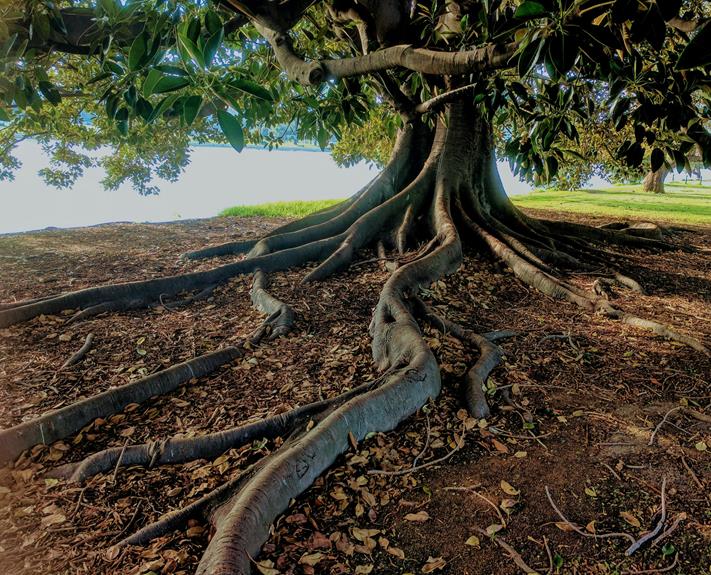Draining your Aerogarden isn't just about keeping it tidy; it's essential for the health of your plants. You'll start by turning off the power—safety first, after all. Carefully remove the plant pods and set them aside. Next, you'll need to extract any excess water; tools like a sponge or small cup work well for this. But what about the water that's not so easy to reach? Siphoning may be your next step, and it's simpler than you might think. Curious about how to perform this without causing a mess or stressing your plants? Let's explore the nuances of effectively maintaining your Aerogarden's water system.
Key Takeaways
- Turn off AeroGarden power to ensure safety and protect the equipment.
- Remove the grow deck to access and empty the water reservoir.
- Use a siphon or pour method to extract all water from the reservoir.
- Thoroughly wipe the reservoir dry with towels or a sponge.
- Allow the Aerogarden components to air dry completely before reassembling.
Gather Necessary Tools
Before you start draining your Aerogarden, make sure you have a large bowl and a soft sponge at hand. You'll also need a few more tools to guarantee everything goes smoothly. Gather a measuring cup; it'll help you manage the water level precisely, giving you control over the draining process. Don't forget a towel or two for any spills. Accidents happen, but being prepared minimizes the mess and keeps you in charge.
Next, locate a funnel. This isn't just any funnel—it's your precision tool for directing water exactly where you want it, avoiding waste and ensuring a clean, controlled environment. Check its size; it should fit comfortably into the opening of your storage container but not be so large that it's unwieldy.
Finally, have a storage container ready. This will be where you temporarily store the nutrient solution if you plan to reuse it. Choose a container with a secure lid to prevent any spills during transport or storage. Remember, the size of your container should correspond to the volume of your Aerogarden model.
With these tools, you're equipped to handle the task efficiently, keeping everything under your control, ensuring a smooth operation from start to finish.
Turn Off AeroGarden Power
Have you turned off your AeroGarden yet? It's an essential step in maintaining control over the draining process. Turning off the power guarantees safety and sets the stage for a smooth operation. Here's why it's important:
- Safety First: Handling any electrical device near water can be hazardous. By powering down, you eliminate the risk of electrical shock, giving you peace of mind as you proceed.
- Preserve Equipment: Disconnecting your AeroGarden also protects the electronic components from potential damage. This preventive measure keeps your system in top shape, avoiding unnecessary repairs.
- Controlled Environment: With the system off, you're in full control. There's no unexpected cycling of water or lights, which means you can work without interruptions.
- Energy Conservation: While it may seem minor, turning off your AeroGarden while not in use conserves energy, which is both environmentally friendly and cost-effective.
Remove Plant Pods
Now, carefully remove the plant pods from your AeroGarden. It's important to handle them gently to avoid damaging the roots or stems. Grasp the base of the pod firmly and lift straight up. If a pod sticks, wiggle it gently back and forth until it comes free. This is your garden, and understanding each plant's condition as you remove them can provide insights into their health and your system's effectiveness.
Here's a quick guide to assess each pod as you remove them:
| Pod Condition | Action Suggestion |
|---|---|
| Roots entangled | Gently untangle |
| Overgrowth | Consider pruning |
| Signs of disease | Isolate pod |
| Healthy growth | Reuse if possible |
| Weak or dying | Dispose carefully |
Removing the pods not only prepares your AeroGarden for draining but also gives you a chance to inspect and make decisions about your plants' future. Be decisive; your actions now will impact the health and productivity of your garden. After all pods are out, set them aside in a shaded, safe area if you're planning to replant or dispose of them. This step is about taking control and setting the stage for a successful refresh or cleanup of your system.
Extract Excess Water
Next, you'll need to extract excess water from your AeroGarden's reservoir. This step is important to prevent water stagnation and maintain a clean system.
Here's how you can effectively remove the water and regain control over your AeroGarden's environment:
First, make sure your AeroGarden is unplugged to avoid any electrical hazards. Then, locate the drain or overflow tube usually found at the base or side of your unit. If your model doesn't have a dedicated drain, you might need to manually scoop out the water. Use a small container or syringe for precision and avoid disturbing the root system. Pour the water into a sink or bucket, being careful not to spill.
To streamline this process and make sure you're in full control, consider the following key points:
- Use the Right Tools: Have containers or a syringe handy to extract water efficiently.
- Keep It Clean: Regularly clean the tools you use to prevent contamination.
- Monitor Water Levels: Always keep an eye on how much water remains to avoid over-draining.
- Stay Safe: Ensure the system is always unplugged during this process.
Disconnect Water Pump
After removing the excess water, you'll want to disconnect the water pump to guarantee all components are properly maintained. This step is important for preventing any potential issues and making sure your Aerogarden operates at peak efficiency. First, make sure your Aerogarden is unplugged from the power source to avoid any electrical hazards. Safety first, always.
Next, locate the pump in your Aerogarden model. Depending on your specific unit, the water pump is usually found at the base of the Aerogarden. Gently remove any plants or grow decks that obstruct access to the pump. This might seem like a hassle, but it's necessary for thorough maintenance.
Now, you'll see the pump connected with tubes or wires. Carefully detach these connections. Some models may have a clip or a connector; pressing or sliding these will release the pump. Handle these components with care to avoid damage.
Once the connections are free, you can remove the pump. Take this opportunity to inspect it for any signs of wear or damage. If it looks good, set it aside.
You've successfully taken control of your Aerogarden's maintenance, ensuring a longer lifespan and better performance from your setup.
Tilt and Drain System
Tilt your Aerogarden gently to make sure all remaining water flows towards the drainage area. This simple action gives you control over the draining process, making certain that the water doesn't spill unnecessarily and is directed exactly where you want it to go.
Here's how you can effectively use the tilt and drain system:
- Steady Your Aerogarden: Before you begin tilting, make sure your Aerogarden is on a stable, flat surface to prevent any accidents or spills.
- Gentle Tilt: Slowly tilt the device towards the drainage area. It's important to do this gradually to manage the water flow and prevent any sudden gushes that could create a mess.
- Monitor Water Flow: Keep an eye on the flow of the water. You'll want to make sure that it's steady and controlled, adjusting the tilt as necessary to maintain this.
- Prepare for Next Steps: As the water drains, get ready for the next part of your maintenance routine. This proactive approach keeps you in charge and ensures a smooth shift to further cleaning or refilling tasks.
Clean Reservoir and Components
Once your Aerogarden is drained, clean the reservoir and components to guarantee peak functioning. This step is vital to prevent any buildup of minerals and algae that can affect the system's efficiency and the health of your plants. Start by removing any visible debris from the reservoir. Use a soft cloth or sponge to avoid scratching the surfaces.
Next, prepare a cleaning solution by mixing one part white vinegar with three parts water. This natural cleaner is effective at breaking down any residues without introducing harsh chemicals into your Aerogarden. Thoroughly wipe the inside of the reservoir, paying special attention to corners and crevices where grime tends to accumulate.
For the pump and other small components, detach them carefully and soak in the same vinegar solution for about 15 minutes. This will help loosen any particles stuck in small openings and ensure they're completely clean. After soaking, use a small brush or toothbrush to scrub away any remaining residues.
Rinse all cleaned parts with warm water to remove any traces of vinegar. Make sure they're completely dry before you consider reassembling. This meticulous cleaning regime keeps your system running smoothly and extends its lifespan.
Reassemble AeroGarden Parts
Now that your Aerogarden parts are clean and dry, you can start reassembling them. Reassembling correctly is key to ensuring your Aerogarden functions at its best, giving you full control over your indoor gardening. Here's how you'll put it all back together:
- Insert the pump: Make sure the pump is securely placed at the bottom. This is vital as it circulates water and nutrients to your plants.
- Position the grow deck: Carefully align the grow deck on top of the reservoir. It should snap into place, providing a stable base for your seed pods.
- Set up the lights: Attach the light arm to the base. Ensure it's tight and adjusted to the right height for effective plant growth.
- Reinstall the grow domes: Place the grow domes over the seed pods. They create a mini greenhouse effect, which is essential for seed germination.
You're in charge here, and every piece you assemble affects your garden's productivity. Pay attention to how each component fits together; a well-assembled Aerogarden is the foundation of a thriving indoor garden. Once assembled, you'll be ready to move on to the next steps in your gardening journey, without worrying about leaks or malfunction.
Refill With Fresh Water
Fill your Aerogarden's reservoir with fresh, cool water up to the fill line indicated. This precise step is crucial for guaranteeing your system operates efficiently and your plants thrive. You're in control here; the amount of water you add affects your garden's health directly.
When adding water, consider the quality. If your tap water is hard or heavily chlorinated, think about using filtered or distilled water to avoid mineral buildup and potential harm to your plants. This choice puts you in charge of preventing common issues such as nutrient lockout, where plants can't absorb nutrients effectively due to poor water conditions.
Additionally, ensure the water temperature isn't too cold or too hot. Extreme temperatures can shock your plants, stunting growth or even causing damage. Aim for a temperature that's comfortable to the touch, typically around room temperature, to maintain an ideal growing environment.
Restart and Check System
Restart your Aerogarden system and thoroughly check all functions to guarantee everything is running smoothly. After refilling with fresh water, it's important to make sure that your garden isn't just back up, but also optimized for peak performance. You're now in control of bringing your setup to its best state.
Here's a quick checklist to help you maintain that control:
- Power Cycle: Turn off your unit for a minute and then turn it back on. This simple reset can resolve minor glitches and refresh the system's settings.
- Pump Functionality: Listen for the pump's sound; it should be a steady, quiet hum. If it's noisy or intermittent, there might be an issue.
- Light Settings: Check if the LED lights are functioning correctly. They should be bright and evenly lit across all plants.
- Nutrient Levels: Make sure that the nutrient mix is properly distributed. This is essential for plant health and growth.





Konnichiwa! (Hello!) I'm Pat Tokuyama, a Japanese tofu cookbook author, who travels for music, food, and adventure. If you like Japanese tea, checkout some of the newestorganic japanese tea, matcha bowls and noren and more!
** Curious about the Plant Based Japanese Cooking Club? ** Learn more here!